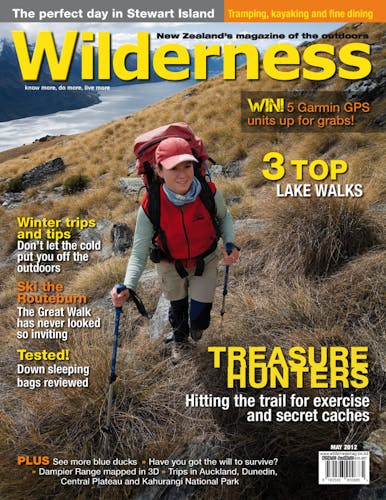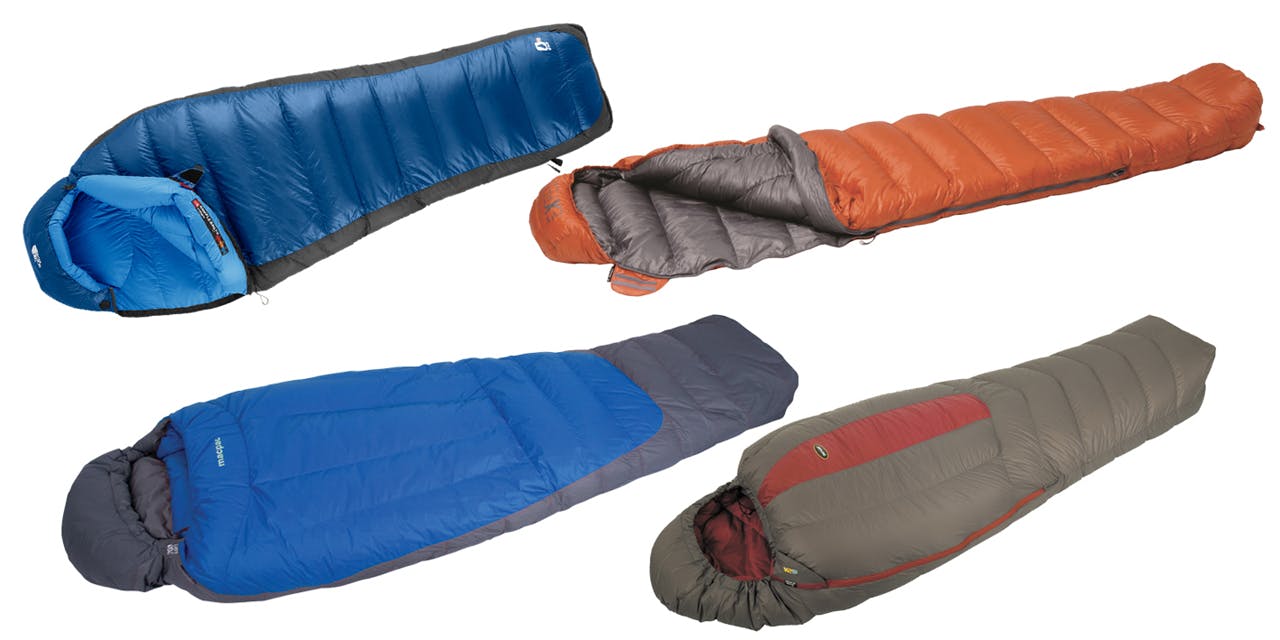Our reviewers head to the Kaweka’s, Arthur’s Pass and Paparoa national parks in search of a perfect’s night sleep.
The North Face Blue Kazoo $649.95
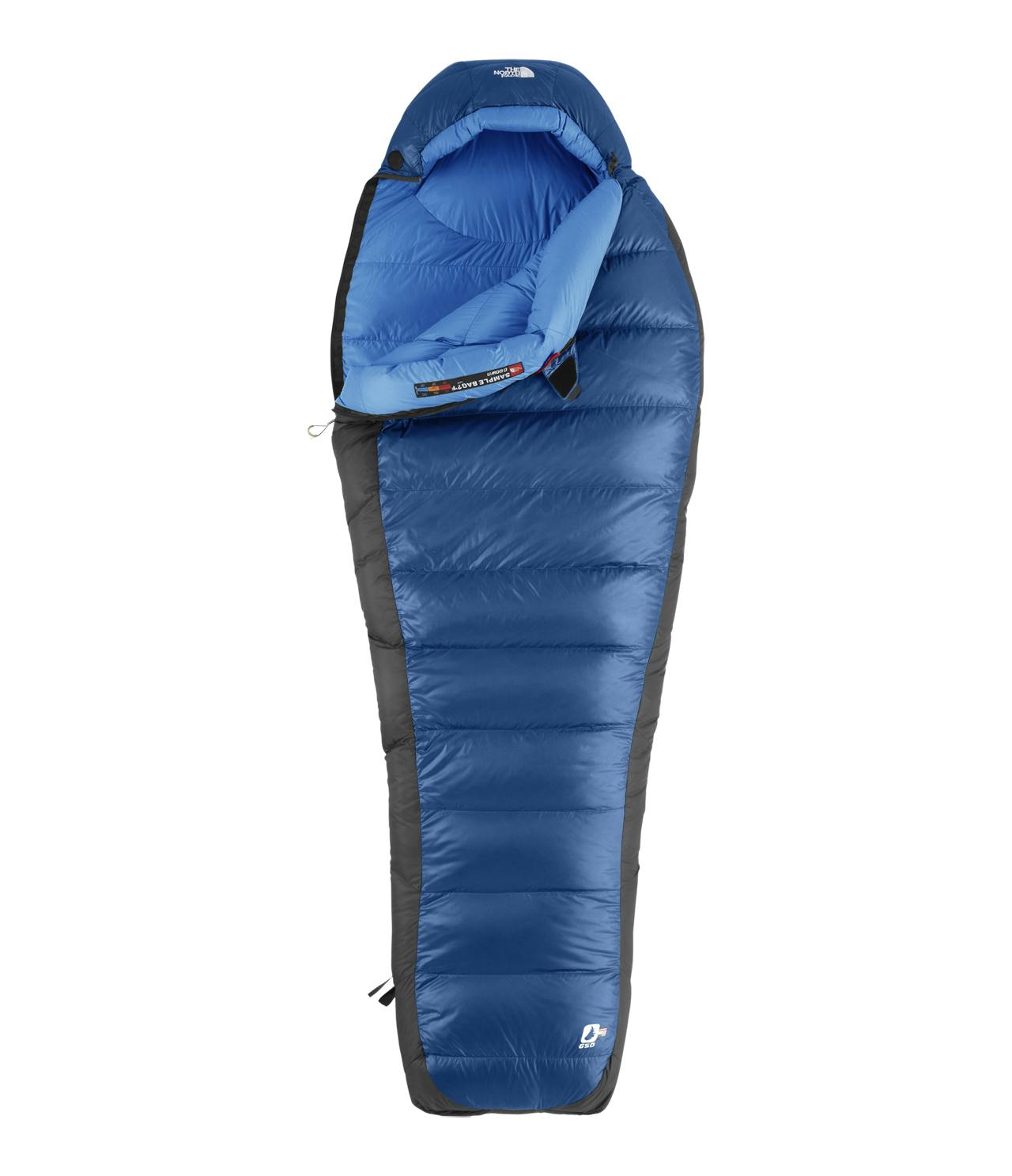
This bag has 650g of Hungarian grey goose down and generally has all the warmth you would need for most New Zealand conditions. It’s rated as a three-season bag, but if you are a reasonably warm sleeper you would get away with this in a New Zealand winter, as long as you were happy to rug up with a down jacket on the really cold nights. The price is near the upper limit for what I would look at, but the down and construction quality felt excellent.
I was supplied with a size regular and that was only just large enough for my 183cm height. The feeling of it being a little tight was perhaps exaggerated by the snug fitting hood design. This is personal preference, but I much prefer a bag with a hood that lies flat and open when not in use that can be later cinched up into a snug hood. Many of The North Face bags are designed with the complex hood of the Blue Kazoo and it seems the design philosophy is that if you are going to provide a hood, do it well and do it anatomically. That’s fair enough, but it doesn’t really take into account that on a 650g three-season bag you are not necessarily using a hood a lot of the time and want something a little more versatile.
The bag came with a stuff sack that was essentially a compression dry bag. This was a new idea to me, and in theory I can see the advantages of this. In practice I found it a bit of a chore to cramp the bag down to any sort of reasonable packed size and would prefer a simple old stuff sac.
After nearly a whole summer I’ve concluded I could quite easily live with this sleeping bag, and I’m due for a new one any day soon.
– Rob Brown
Exped Ultralite 500 $529
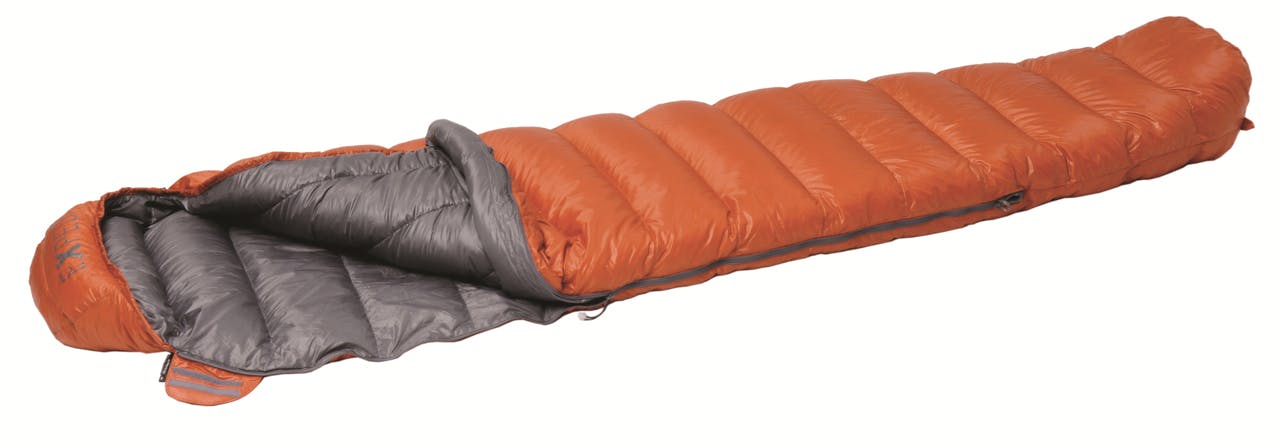
I’m a fan of lightweight sleeping bags. Why lug around a heavy one during summer? And even during winter, if you add a good down jacket which you can sleep in as well, a lightweight bag will often prove adequate, especially if you’re in a hut.
I tested out the Ultralite 500 on two five-day Kaweka and Arthur’s Pass trips, including nights in both huts and tents. Warmth-wise, it worked. Definitely not too hot for summer and providing reasonable warmth for spring and autumn trips too. But I’d probably hesitate to use it in a South Island alpine setting during winter. Exped recommends the bag as comfortable in the 5-17°C range, with a limit of -1°C and extreme at -16°C. I wouldn’t want to use it below O°C, although a down jacket and silk liner would help extend the comfort range.
The fabric consists of Texped PA35, a ripstop nylon that seems quite durable. The fill is goose-down, the best available and according to the sales blurb ‘not plucked from live geese.’
The stuff sack is fantastic: waterproof and superlight (52g) with a tiny almost weightless clip, you can squeeze the sleeping bag in, seal it and it stays vacuum-packed small and watertight. Perfect.
It’s not a huge sleeping bag, capacity-wise, and for the medium size (760g) you could not be much bigger than me (1.78m and 80kg) if you want to fit into it. Happily, Exped also cater for other builds, with a small (720g), large (820g) and XL (900g).
The Ultralite does have a fairly hefty price, but if you can afford it that’s probably a fair trade-off to save carrying those all-important extra grams.
– Shaun Barnett
Macpac Latitude XP $799.95
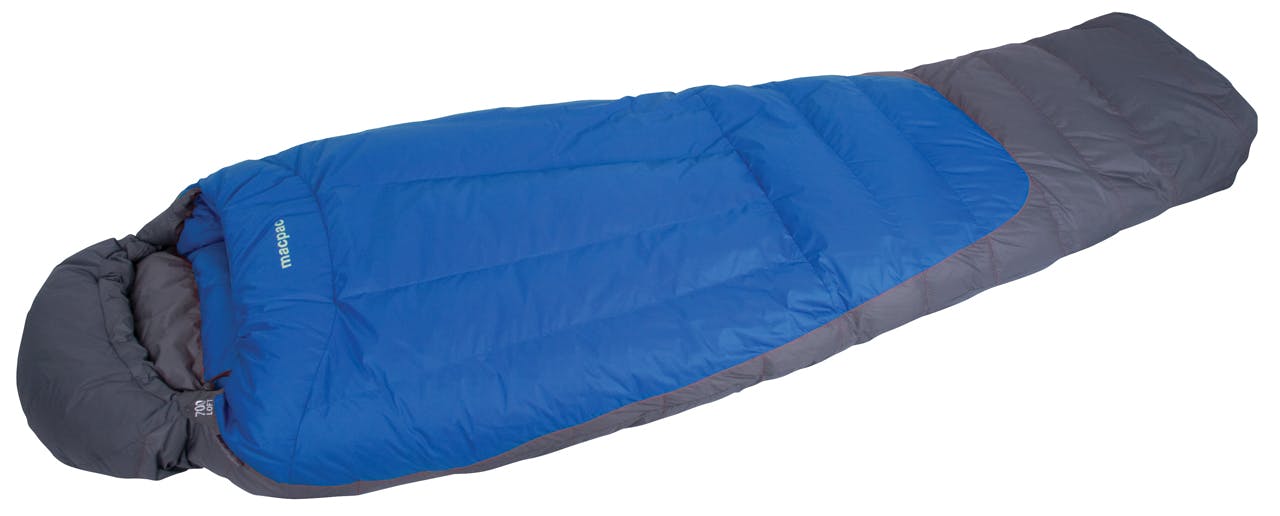
If you’re being lashed by 300mm of horizontal rain and freezing temperatures while sleeping on a canvas bunk in an un-insulated hut at 920m in the Paparoa’s, you want to know your sleeping bag is good.
With a comfort rating of -4°, the Latitude only needed an extra base layer to get me over the cold-bunk hurdle, before nodding off for the night.
The hood’s generous opening pulls up snugly around your face to keep the warm air in. The 30-denier Reflex LoftPro outer shell fabric did a great job of keeping my condensation-filled breath away from the bag’s down fill. The fabric was damp where I’d been breathing from the hood all night, but the protective barrier hadn’t been broken.
Radial baffles across the chest and torso area of the bag aren’t new innovations, but did a good job of keeping my upper body warm. Maybe it’s just me, but I always seem to feel a little cold over my legs in a Macpac bag; the extra base layer did the trick.
There are a couple of downsides to the Latitude, though. For a bag filled with 700g of 700-loft 90/10 goose down, it seems a bit overweight. At 1550g (advertised weight for the XP standard: 1350g) the Latitude is somewhat portly to carry, and has no compression bag to reduce its volume. There are other models on the market performing at a higher level without buckling your knees.
The fabrics aren’t the soft touch of many other bags, and sometimes felt a bit clammy. Despite these two misdemeanours, the Latitude performs well, even in rough conditions, and is a worthy addition to your kit.
– Paul King
One Planet Cocoon-5 $549
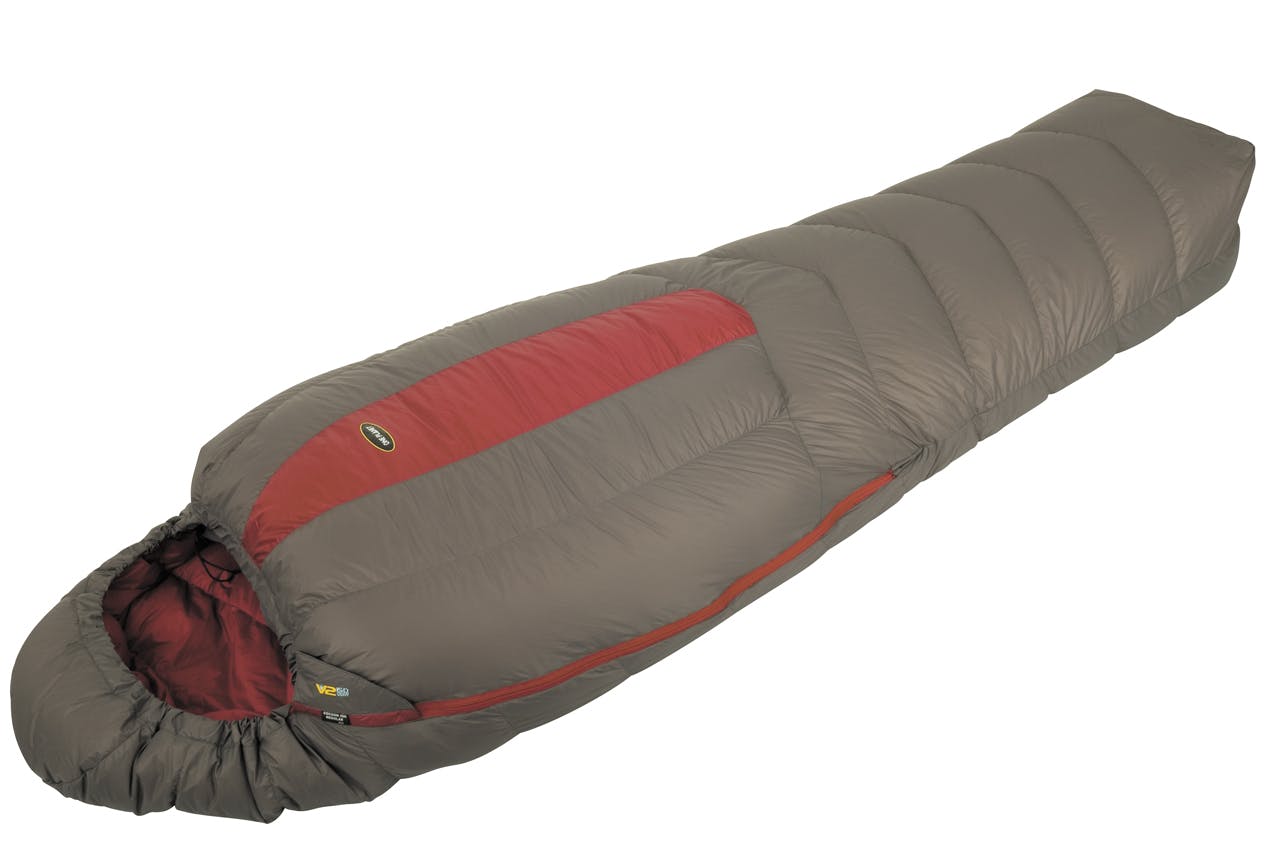
The sleeping bag is my favourite and most important piece of kit. I think it is because the quality of a sleeping bag is one of the biggest determinants of how good your trip will be.
Like many trampers, I battle with the trade-off between weight, bulk and warmth. Often, to keep my pack manageable, I make the trade-off against comfort at night, and usually regret it on the trip with some bad nights’ sleep.
If this sounds like a familiar dilemma to you, then the One Planet Cocoon could be what you’ve been looking for.
I was immediately attracted to its small size: once in the stuff sack it doesn’t take up a lot of space, and the compression straps tightened it up even more. Yet when you lie it flat it looks surprisingly lush and warm.
A regular Cocoon is only 640g, yet it is packed with 800+ goose down, which provides excellent lofting ability.
I was lucky enough to trial this on a couple of summer trips, and had two nights under the stars (always a good test of a bag). One, on the top of the Paparoa Range, and one on the rock slabs at Adams Col on the Garden of Eden. There was only one problem – on both nights I was very warm and comfortable and had a perfect night’s sleep, thus missing out on the stars wheeling overhead!
I also camped on the snow of the Lambert Glacier (with a light freeze) and used the bag to warm up again after a cold day in the rain. In both cases the sleeping bag was excellent in challenging conditions. The zip is only half length, leaving a snug space for the legs and feet. The hood can be tightly cinched around you as well if the temperature drops.
The Cocoon is still a summer bag. If you are a cold sleeper, then it probably wouldn’t be sufficient for the use I put it to. Likewise, in winter I would use a bigger sleeping bag. But as someone who regularly uses small sleeping bags, the Cocoon would make an excellent investment. I didn’t want to give it back.
– Richard Davies





